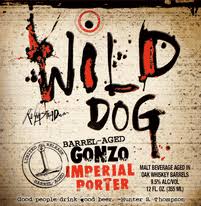

WORCESTER, MASSACHUSETTS
WORMTOWN BREWERY represents the second largest New England city, Worcester, an industrial and manufacturing community that’s home to Holy Cross University 30 miles west of Boston. Speedy expansion allowed Wormtown to move into its own 10,000 square foot downtown space (open St. Patrick’s Day 2015 in an old Buick dealership) after being housed at Peppercorns Grille for five years.
Brewer Ben Roesch offers “a piece of Massachusetts in every glass” thanks to locally sourced grains and hops. A fabulous Underground Ale Series is due sometime in 2016. A new bottling line allows flagship offerings such as the increasingly popular Be Hoppy, Bottle Rocket Pale Ale and Pumpkin Ale to be sold at liquor stores for deeper commercial exposure.
A backyard grain silo and stone-slated side patio mark Wormtown’s exterior while 10 tap handles grace the terrazzo-floored tasting room bar (with nifty front-walled beer name canvas, high ceilings, exposed pipes, Gruber growler filler and windowed brew tanks).
I stopped in after lunch at Brew City Grill – a few doors down – during January ’16, exploring seven previously untried libations.
Easygoing Fresh Patch Pumpkin got things going with its sweet pumpkin pie spicing contrasting dry pumpkin-roasted vegetalia, leaving a light ginger-nutmeg-allspice trail.
Described as a “liquid fueled rocket” dedicated to pioneering engineer Doctor Robert Goddard, Bottle Rocket Pale Ale loads citric-peeled tropicalia onto rye malt graining and grassy hop astringency.
Next, outstanding mainstay Hopulence DIPA, a sharply embittered citric-pined full body, brought a large yellow grapefruit peel contingent to orange-peeled pineapple, papaya, guava and passionfruit tropicalia (above the delicate French bread base).
Classic English brown ale, Blizzard Of ’78, utilized local roasted coffee beans from Acoustic Jam for its intriguing blend as cocoa dryness, charred nuttiness and dark-roasted hop bittering seeped into the reedy cherrywood bottom.
Combining subtle peat-smoked malts with cocoa-powdered brown chocolate sweetness and sugary dried fruiting, hybridized Slow Burn Rauch Bock retained a light bourbon lilt.
Just as interesting, Snafu Rye Wine combined dry rye malts with sweet IPA fruiting, bringing its tangy lemon-candied pineapple, peach, orange and tangerine glaze to the fore.
Arguably Wormtown’s finest offering this cold day was Sweet Tats, a robust breakfast-styled oatmeal stout surging forth with sugared coffee overtones backed by maple molasses oats, brown chocolate, espresso and vanilla richness.
WORMTOWN’S FORMER BREWERY AT PEPPERCORNS:
Now occupied by Dave Richardson’s Flying Dreams Brewery, Peppercorns hosted Wormtown originally.
Connected to Peppercorns Grille & Tavern on Park Avenue in a freestanding tan edifice (with bright red Peppercorns sign), Wormtown has made fabulous inroads since opening its doors in 2010, winning a few Great International Beer Festival awards for a few well-regarded offerings.
On my initial post-Thanksgiving ’11 trip, my wife and I settled in for dinner at Peppercorns, seated across the pristine 10-stool wood bar near the slate gray side wall. Exposed pipes, multiple TV’s, several tables and local sports memorabilia bedeck the crowded bar while the equally busy wood-furnished backspace offered family dining. Wormtown’s glass-encased brew room sidles the right side next to the parking area.
Besides Wormtown’s ten efficient selections, Peppercorns serves bottled beers by Magic Hat, Abita, Dogfish Head, Bear Republic and Smuttynose (plus the tapped version of Berkshire Steel Rail) as well as extensive wine choices. Drink of the Week, Liquid Marijuana, blended Bacardi Oakheart Spiced Rum with Blue Curacao, Malibu Madori Pineapple Juice and sour mix. Hearty Italian dishes, burgers, seafood, and Neapolitan pizza crowded a large menu.
As the New England Patriots spanked the Philadelphia Eagles this Sunday eve, I delved into a rich lobster corn soup and Bolognese Pasta (with beef, pork, tomatoes and herbs) to go with my ample sampler trays. One of the most impressive beers available this autumnal twilight was enchanting Wormtown Birthday Brew #1, a celebratory 1st anniversary ale placing woody Amarillo hops beside piney grapefruit-pineapple-peach-apple-mango fruiting and creamy corn-sugared caramel malts.
Lighter thirsts would be wise to start with mild red-orange-fruited Elm Park Amber Ale, a straightforward cereal-grained, caramel-toasted, peppery-spiced, beechwood-seared concoction just amiable enough to suit amateurs and aficionados alike.
Sweet-corned honeyed wheat lined the front end of fall seasonal, Wormtown Oktoberfest, a phenol-spiced mid-ranger carrying citric Noble hops to a back-tongued vegetal simmer.
Diacetyl lemon-rotted light body, Seven Hills Pale Ale, will provoke hop-heads with its grassy-hopped lemon rind bittering, dry bark acridity, and solvent-like alkaline acidity. And the washed-out Turtle Boy Blueberry Ale gives its astringent blueberry souring, slick hop phenols and nitro-like cream ale mouthfeel only a modicum of space to roam above the light white wheat backdrop.
Brewer Ben Roesch’s best offerings were right around the corner. On the dry side, The Buk Rye Pale Ale (brewed exclusively for Boston’s famed Bukowski Tavern) slipped pumpernickel rye breading into Citra-hopped grapefruit-lemon-pineapple-mango fruiting, toasted mineral graining and peppery herbage.
Even drier, Be Hoppy IPA matched dry grapefruit-juiced juniper bittering and pine-resinous floral spices to brisk orange-lemon-peach overtones layered atop creamy crystal malting.
Richer than its initial 2010 version, Mass Hole boasts ‘crystallized barley and zesty citrus,’ picking up wood-smoked malts, ample hop spicing and sharp nuttiness atop unripe orange, dried fig and grape esters. A nuttier find, Wormtown Wintah Brown Ale, allowed smoky cocoa, Brazil nut, walnut, hazelnut and tobacco illusions to infiltrate roasted hop-charred spices to its toasted brown breaded finish.
Tonight’s after dinner treat, Woosta Weizenbock, pleated chocolate-spiced smoked malts with sweet banana, cherry, apple and grape illusions as well as tertiary fig-sugared stewed prune, raisin puree, and date dalliances.
On half-hour pop-in during March 2012, tried Worcester’s Bravest Wheat Ale. Its herbal-spiced yellow fruiting, prickly hop fizz and candied crystal malting allowed mild lemon-limed orange peel tartness to reach menthol-freshened salty bottom.
www.wormtownbrewery.com
10 miles south of Worcester in the rural confines of Sturbridge, YANKEE SPIRITS (376 Route 20) had one of the best beer selections on the East Coast, comparing favorably to poughkeepsie’s Half Time and Manhattan’s New Beer Distributors.

